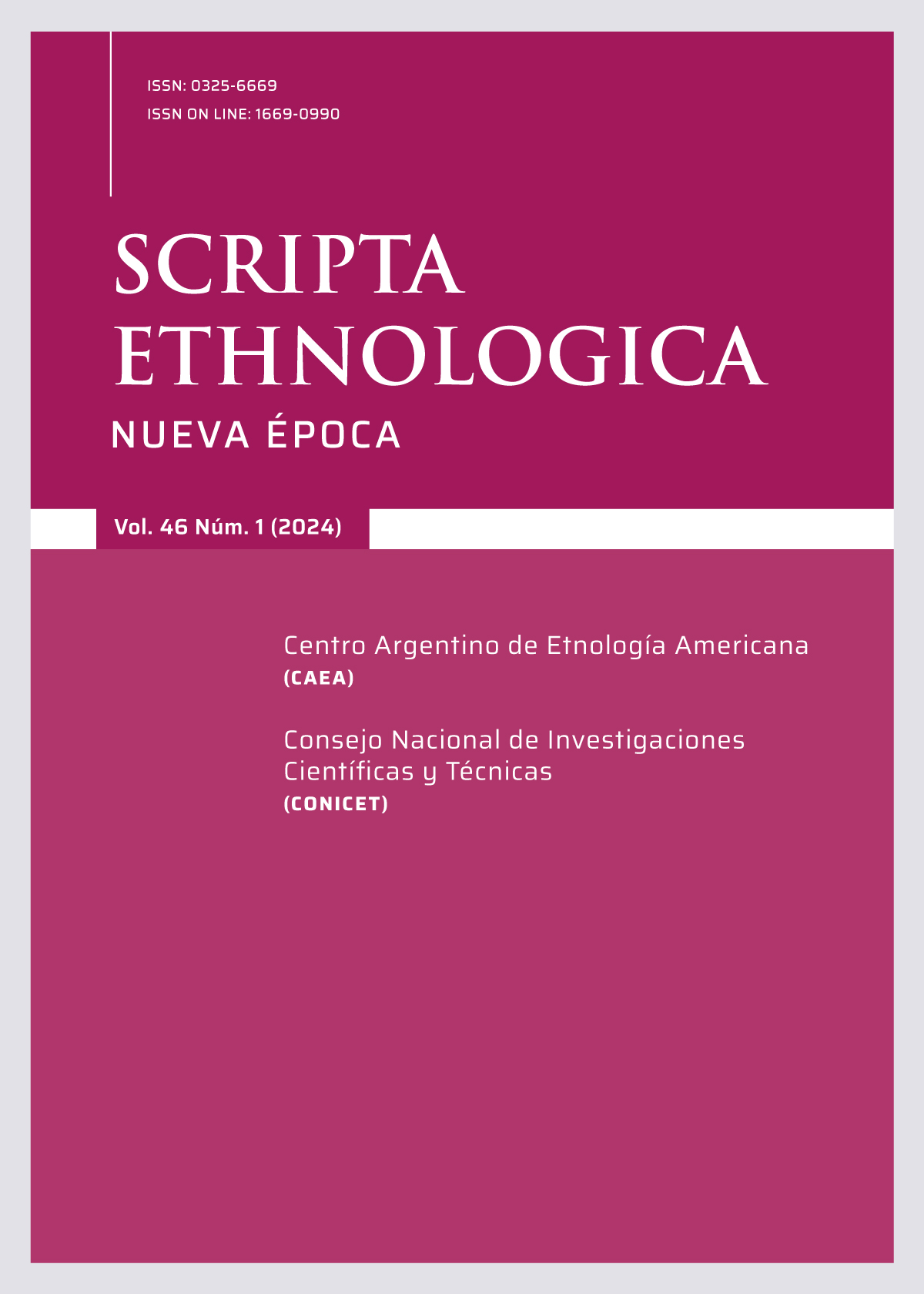DOSSIER CHAMANISMOS CONTEMPORÁNEOS. CONCEPCIONES Y EXPERIENCIAS REVISITADAS. PRESENTACIÓN.
Resumen
Los estudios antropológicos desde sus orígenes muestran fenómenos culturales y categorías sociales que devinieron parte del canon conceptual, aunque muchos se originaran en sociedades particulares y que por complejos factores se transformaron en cuasi universales.
Citas
I. Algranti, J. y D. Setton. 2021. Clasificaciones Imperfectas: Sociología de los mundos religiosos. Buenos Aires: Biblos.
II. Barrett, M. J. 2011. Doing Animist Research in Academia: A Methodological Framework. Canadian Journal of Environmental Education, 16: 123-141.
III. Buyandelger, M. 2013. Tragic Spirits. Shamanism, Memory, and Gender in Contemporary Mongolia. Chicago: The University of Chicago Press.
IV. Carvalho, José Jorge de. 1993. Antropología: saber académico y experiencia iniciática. Antropológicas, Nueva Época, 5: 75-86.
V. Castaneda, C. 1968. The Teachings of Don Juan. A Yaqui Way of Knowledge. Berkeley: University of California Press.
VI. Chilson, C. y P. Knetch (eds). 2003. Shamanisms in Asia. Routledge. London: RoutledgeCurzon.
VII. De Martino, E. 1948. Il mondo magico. Torino: Einaudi.
VIII. De Martino, E. 1965. Magia y Civilización. Buenos Aires: El Ateneo.
IX. Diamond, S. 1973. In search of the primitive. A critique of civilization. New Brunswick and London: Transaction Books.
X. Eliade, M. (1951)1960. El Chamanismo y las técnicas arcaicas de éxtasis. México, D.F.: F.C.E.
XI. Fleck, L., 1981. Genesis and development of a scientific fact. Chicago: The University of Chicago Press: Chicago.
XII. Fonneland, T. 2017.Contemporary Shamanisms in Norway. Oxford: Oxford Academic.
XIII. Harner, M. 1980. The Way of the Shaman: A Guide to Power and Healing. New York: Harper and Row.
XIV. Harvey, G. 2006. Animism: Respecting the living world. New York: Columbia University Press.
XV. Idoyaga Molina, Anatilde. 2000. Shamanismo, Brujería y Poder en América Latina Buenos Aires: CAEA-CONICET.
XVI. Ingold, T. 2011. A storied world. En: T. Ingold, Being Alive. Essays on Movement, Knowledge and Description. New York: Routledge, pp. 141-176.
XVII. Jackson, M. 1989. Paths toward a Clearing: Radical Empiricism and Ethnographic Inquiry. Bloomington, Indiana: Indiana University Press.
XVIII. Langdon, E. J. 2013. New Perspectives of Shamanism in Brazil Shamanisms and Neo-Shamanisms as Dialogical Categories. Civilisations Revue internationale d'anthropologie et de sciences humaines 61(2): 19-35.
XIX. Lyon, W. S. 1998. Encyclopedia of Native American Shamanism: Sacred Ceremonies of North America. New York: Bloomsbury Academic.
XX. Matteson Langdon, E.J. and G. Baer (eds.) 1992. Portals of Power. Shamanism in South America. Albuquerque: University of New Mexico Press.
XXI. Mignolo, W.D. 2000. Local Histories/Global Designs. Coloniality, Subaltern Knowledges, and Border Thinking. Princeton, New Jersey: Princeton University Press.
XXII. Otto, Rudolf. (1917). 1996. Lo racional y lo irracional en la idea de dios. Madrid: Alianza Editorial.
XXIII. Resnier, N. and M. Jolly. 2016. “Afterword: Shape-Shifting Mana: Travels in Space and Time”, in M. Tomlinson and T.P. Tengan (eds.), New Mana. Transformations of a Classic Concept in Pacific Languages and Cultures. Canberra: Australian University Press, pp.349-368.
XXIV. Said, E. 1989. Representing the Colonized: Anthropology's Interlocutors. Critical Inquiry 15: 205-225.
XXV. Segato, Rita. 1992. Um Paradoxo do Relativismo. O Discurso Racional da Antropologia frente ao Sagrado, Religião e Sociedade 16 (1–2): 114–135.
XXVI. Stoller, P. 1989. The taste of ethnographic things. The senses in anthropology. Philadelphia: University of Pennsylvania Press.
XXVII. Stoller, P. 1997. Sensuous scholarship. Philadelphia: University of Pennsylvania Press.
XXVIII. Stuckey, P 2010. Being Known by a Birch Tree: Animist Refigurings of Western Epistemology. Journal for the Study of Religion, Nature and Culture, 4 (3): 182-205.
XXIX. Tomlinson, M. and T.P. Tengan. 2016. “Introduction: Mana Anew”, in M. Tomlinson and T.P. Tengan (eds.), New Mana. Transformations of a Classic Concept in Pacific Languages and Cultures. Canberra: Australian University Press, pp.1-37.
XXX. Viotti, N. 2018. Más allá de la terapia y la religión: una aproximación relacional a la construcción espiritual del bienestar. Salud Colectiva, 14 (2): 241-256.
XXXI. Wright, P. 2008. “Ser-en-el-sueño”. Crónicas de historia y vida Toba. Buenos Aires: Biblos-Culturalia.
XXXII. Wright, P. 2018. Espiritualidades. Entre la ontología y la pragmática. En: J. Esquivel y Verónica Giménez Beliveau (coord.), Religiones en cuestión: campos, fronteras y perspectivas. Buenos Aires: ACSRM-CICCUS, pp.253-265.
XXXIII. Wright, P. 2023. Technologies of the Self in Contemporary South American Shamanisms: The cases of the Qom/Toba (Argentina) and Santo Daime (Brazil). Indigenous Religious Traditions 1.1:25-40.
XXXIV. Wright, P. y M.C. Messineo. 2013. La producción cultural del imaginario esotérico: una visita desde Buenos Aires. Cultura y Religión. Revista de Sociedades en Transición 7 (1): 30-4.
XXXV. Zinn, D. L. 2023. Ernesto De Martino y la actualidad de su pensamiento: un intelectual incómodo que se redescubre. Revista Andaluza de Antropología 24: 35- 48.


